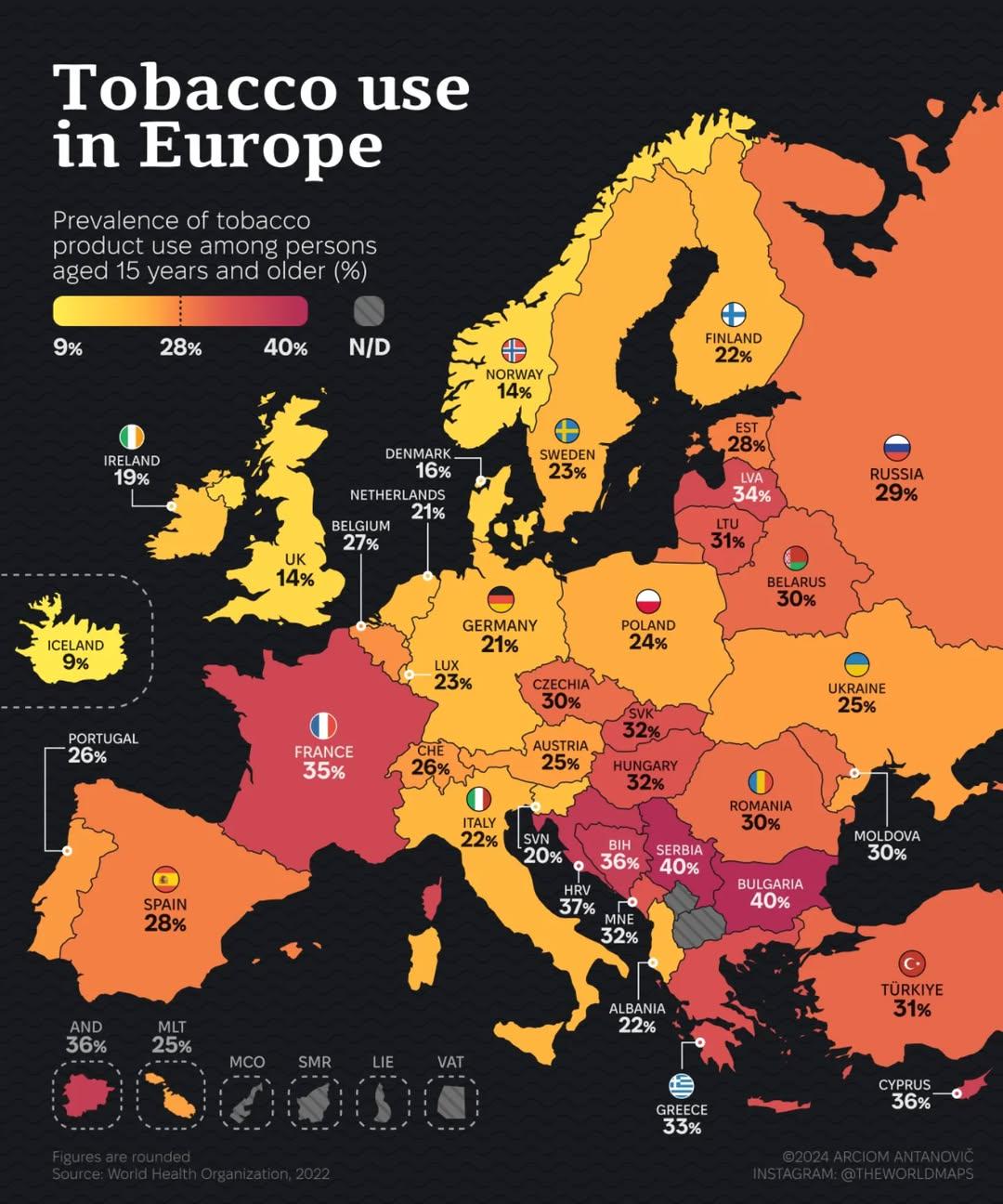Tobacco Use in Europe Map


David Chen
Data Visualization Specialist
David Chen is an expert in transforming complex geographic datasets into compelling visual narratives. He combines his background in computer science ...
Geographic Analysis
What This Map Shows\nThis map provides an insightful visualization of tobacco use across Europe, highlighting consumption rates, demographic patterns, and trends within each country. The data reflects various factors, including age, gender, and socio-economic status, which play crucial roles in shaping tobacco habits. As we delve into this important topic, we’ll uncover the implications of these statistics on public health and policy.
Deep Dive into Tobacco Use in Europe\nTobacco use remains a significant public health issue in Europe, despite ongoing efforts to reduce consumption through legislative measures and health campaigns. According to the World Health Organization (WHO), tobacco is responsible for over 700,000 deaths each year in the European region. Interestingly, the prevalence of smoking varies widely across countries, influenced by cultural, economic, and regulatory factors.
For instance, Eastern European countries, such as Bulgaria and Serbia, show some of the highest smoking rates, with estimates indicating that nearly 40% of the adult population smokes. In contrast, Western European nations like Sweden and Norway exhibit significantly lower rates, often attributed to robust public health policies and the popularity of alternatives like snus, a smokeless tobacco product.
Have you ever wondered why some countries have higher smoking rates than others? One of the key factors is the degree of tobacco regulation in each country. In nations where strict advertising bans and high taxation on tobacco products are enforced, smoking rates tend to be lower. For example, the United Kingdom has implemented comprehensive tobacco control policies, including plain packaging and graphic health warnings, which have contributed to a decline in smoking prevalence.
Additionally, socio-economic status plays a crucial role in tobacco use. Research indicates that lower-income individuals are more likely to smoke, often due to stress and limited access to health resources. Interestingly, this trend is also reflected in the gender distribution of smokers, with men generally exhibiting higher smoking rates than women, although this gap is narrowing in some regions.
Regional Analysis\nWhen examining tobacco use across different European regions, the disparities become even more pronounced. In Northern Europe, countries like Finland and Denmark have made significant strides in reducing smoking rates, thanks in part to their strong focus on public health initiatives and education. Conversely, Southern Europe, particularly Greece and Italy, still faces challenges with high smoking prevalence, often linked to cultural attitudes towards smoking and less stringent regulations.
In Central Europe, nations such as Hungary and Poland are also grappling with elevated smoking rates, despite efforts to implement anti-smoking laws. For example, Hungary has introduced a tobacco control law that limits smoking in public places, yet the cultural acceptance of smoking persists among certain demographics. The map reveals these regional variations clearly, emphasizing the need for tailored public health strategies that consider local customs and attitudes toward tobacco.
Significance and Impact\nUnderstanding tobacco use in Europe is not just about numbers; it has real-world implications for public health, economics, and social policy. The ongoing burden of tobacco-related diseases places significant strain on healthcare systems, leading to increased healthcare costs and loss of productivity. Moreover, the COVID-19 pandemic has highlighted vulnerabilities among smokers, with evidence suggesting that tobacco use may increase the severity of respiratory illnesses.
As we look toward the future, it is crucial to address these disparities in tobacco use through targeted interventions and policies. With the rise of vaping and alternative nicotine products, there’s a complex landscape of tobacco consumption that policymakers must navigate. What’s fascinating is that while some countries are seeing a decline in traditional smoking, they must also contend with the emerging trends of alternative tobacco products, which may pose new public health challenges.
In conclusion, this map of tobacco use in Europe not only illustrates current consumption patterns but also serves as a call to action for public health officials and communities alike. By understanding the factors that contribute to tobacco use, we can develop more effective strategies to combat this ongoing public health crisis and promote healthier lifestyles across the continent.
Visualization Details
- Published
- October 11, 2025
- Views
- 24
Comments
Loading comments...